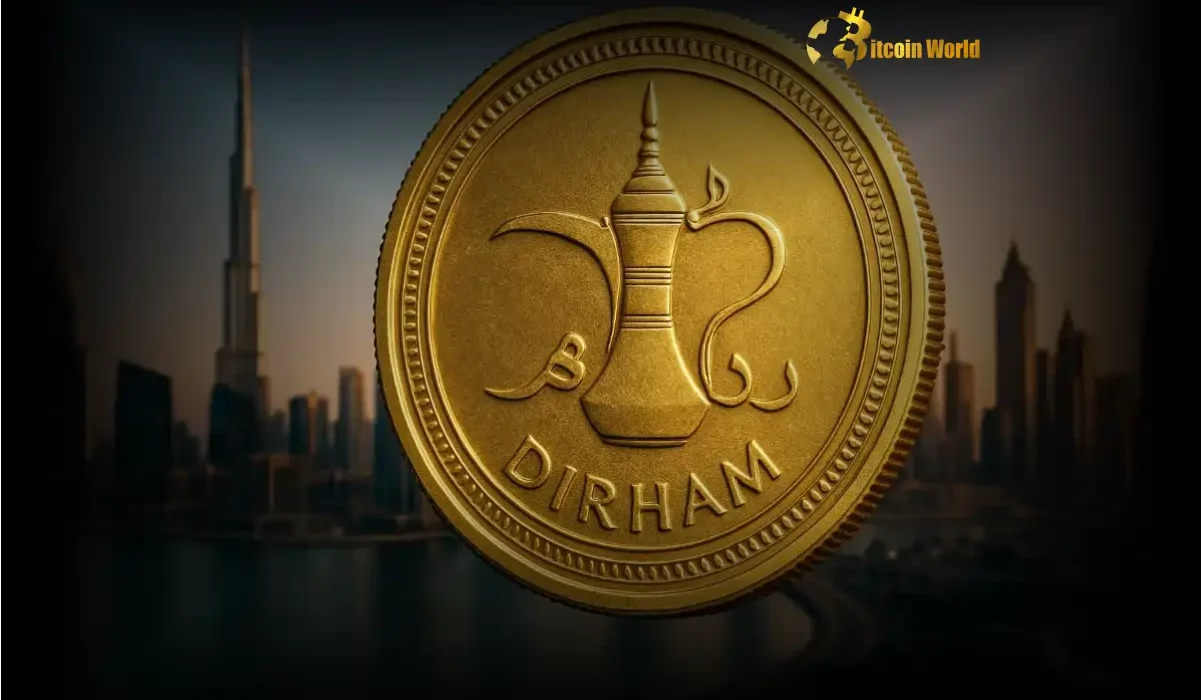Get ready for a groundbreaking shift in the financial landscape of the United Arab Emirates! The Central Bank of the UAE (CBUAE) is making waves with its ambitious plan to launch its very own UAE digital currency, the digital dirham, in the fourth quarter of 2025. This exciting development, reported by Cointelegraph and Khaleej Times, signals the UAE’s commitment to embracing digital innovation and solidifying its position as a forward-thinking global financial hub. But what exactly does this mean for you, and what are the potential implications of this digital transformation? Let’s dive into the details.
What is the Digital Dirham and Why is the UAE Launching a Central Bank Digital Currency?
A Central Bank Digital Currency (CBDC), like the digital dirham, is essentially a digital form of a country’s fiat currency, in this case, the UAE dirham. Unlike cryptocurrencies like Bitcoin or Ethereum, which are decentralized, a CBDC is issued and regulated by the central bank. Think of it as a digital version of the physical dirham notes and coins you use every day, but designed for the digital age.
So, why is the CBUAE taking this leap into the digital realm? According to reports, CBUAE Governor Khaled Mohammed Balama emphasized that the digital dirham is designed to:
- Enhance Financial Stability: By providing a secure and efficient digital payment system, the digital dirham can contribute to a more stable and resilient financial infrastructure.
- Prevent Financial Crimes: The transparent and traceable nature of digital currencies can make it harder for illicit activities like money laundering and fraud to thrive.
These are significant benefits, but the move towards a UAE digital currency is also part of a broader global trend. Many countries are exploring or have already launched CBDCs, recognizing their potential to modernize payment systems and improve financial inclusion. The UAE doesn’t want to be left behind in this digital revolution.
The Benefits of a Digital Dirham: A Closer Look
The introduction of a digital dirham could bring a plethora of advantages to the UAE economy and its residents. Let’s explore some key benefits:
- Faster and More Efficient Payments: Imagine instant transactions, 24/7, without the delays associated with traditional banking systems. The digital dirham promises to streamline payments, making them faster and more efficient for businesses and consumers alike.
- Reduced Transaction Costs: Digital transactions can significantly reduce the costs associated with physical cash handling, interbank transfers, and payment processing fees. This can lead to savings for both businesses and individuals.
- Increased Financial Inclusion: A digital dirham can provide access to financial services for the unbanked and underbanked populations. With just a mobile phone, individuals can participate in the digital economy, promoting greater financial inclusion.
- Enhanced Security and Transparency: CBDCs are designed with robust security features, and their transactions are recorded on a digital ledger, providing greater transparency and reducing the risk of fraud and counterfeiting.
- Boost to Innovation and the Digital Economy: A UAE digital currency can foster innovation in the fintech sector, paving the way for new digital payment solutions and services. It can also accelerate the growth of the UAE’s digital economy as a whole.
Navigating the Challenges: What are the Potential Hurdles?
While the prospects of a digital dirham are exciting, there are also challenges that the CBUAE will need to address to ensure a successful launch and widespread adoption. Some potential hurdles include:
- Cybersecurity Risks: As with any digital system, cybersecurity is paramount. Protecting the digital dirham infrastructure from cyberattacks and ensuring the security of user wallets and transactions is crucial.
- Data Privacy Concerns: The digital nature of CBDCs raises questions about data privacy. Striking a balance between transparency and protecting user data will be essential to build public trust.
- Technological Infrastructure: Implementing a CBDC requires robust technological infrastructure. The CBUAE needs to ensure that the technology is scalable, reliable, and accessible to all users across the UAE.
- User Adoption and Education: For the digital dirham to be successful, widespread user adoption is necessary. Public education campaigns will be needed to familiarize people with the new currency and its benefits.
- Integration with Existing Financial Systems: Seamless integration of the digital dirham with existing banking and financial systems is vital to ensure a smooth transition and avoid disruptions.
The Global CBDC Landscape: How Does the UAE Compare?
The UAE is not alone in its journey towards a CBDC. Many countries around the world are actively exploring or have already launched their own digital currencies. Here’s a quick comparison:
| Country/Region | CBDC Status | Name (if applicable) |
|---|---|---|
| China | Pilot Phase | Digital Yuan (e-CNY) |
| Nigeria | Launched | eNaira |
| Bahamas | Launched | Sand Dollar |
| European Central Bank | Exploration Phase | Digital Euro |
| United States | Research Phase | Digital Dollar (potential) |
| UAE | Development Phase | Digital Dirham |
As you can see, the UAE is joining a growing global movement. Learning from the experiences of other countries and tailoring its approach to its specific needs will be crucial for the successful implementation of the UAE digital currency.
What Does the Digital Dirham Mean for Crypto Adoption in the UAE?
The launch of a digital dirham could have significant implications for crypto adoption in the UAE. On one hand, it might be seen as competition to existing cryptocurrencies. However, it could also pave the way for greater acceptance and understanding of digital assets in general.
Here’s how the digital dirham could influence crypto adoption:
- Increased Digital Literacy: The introduction of a CBDC will necessitate greater digital literacy among the population. As people become more comfortable using digital currencies, they may be more open to exploring other forms of digital assets, including cryptocurrencies.
- Regulatory Clarity: The CBUAE’s move towards a CBDC signals a proactive approach to digital assets. This could lead to greater regulatory clarity for the broader cryptocurrency market in the UAE, fostering a more conducive environment for innovation and investment.
- Potential Integration: In the future, there could be potential for integration between the digital dirham and certain regulated cryptocurrencies. This could create new opportunities for interoperability and innovation within the digital asset space.
While the exact impact on crypto adoption remains to be seen, the UAE digital currency initiative is undoubtedly a significant step forward for the digital asset ecosystem in the region.
The Future is Digital: Embracing the Digital Dirham
The Central Bank of the UAE’s plan to launch the digital dirham in Q4 2025 is a bold and transformative move. It reflects the UAE’s commitment to innovation, financial stability, and embracing the future of finance. While challenges exist, the potential benefits of a UAE digital currency are substantial, ranging from enhanced payment efficiency and reduced costs to increased financial inclusion and a boost to the digital economy.
As the UAE embarks on this exciting journey, the world will be watching closely. The successful implementation of the digital dirham could serve as a model for other countries considering their own CBDCs and further solidify the UAE’s position as a leader in the digital age. The digital revolution in finance is underway, and the UAE is taking a decisive step into this exciting new era.
To learn more about the latest crypto market trends, explore our article on key developments shaping Bitcoin price action.
Disclaimer: The information provided is not trading advice, Bitcoinworld.co.in holds no liability for any investments made based on the information provided on this page. We strongly recommend independent research and/or consultation with a qualified professional before making any investment decisions.


